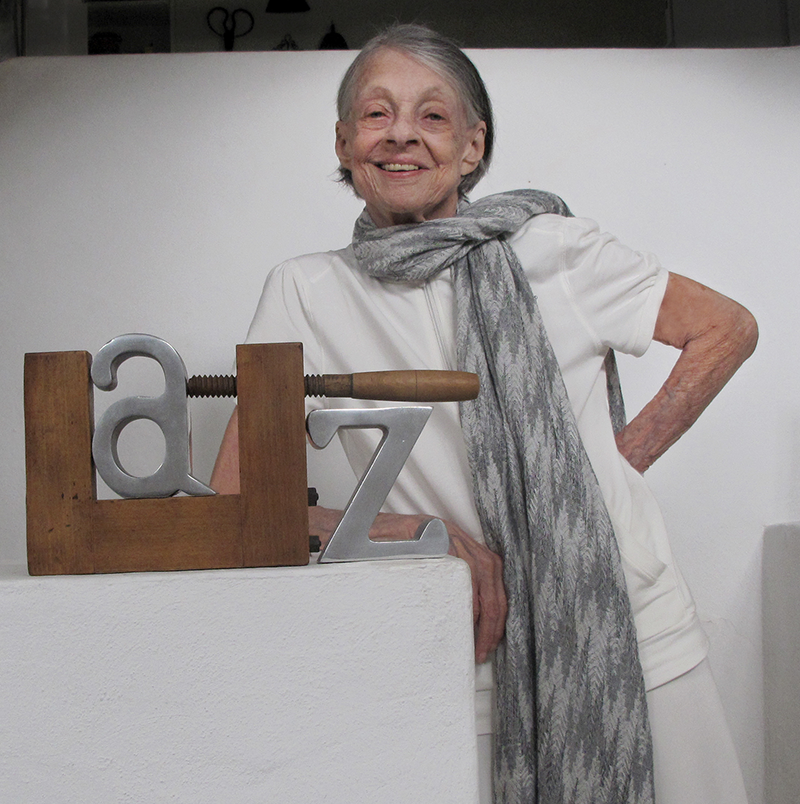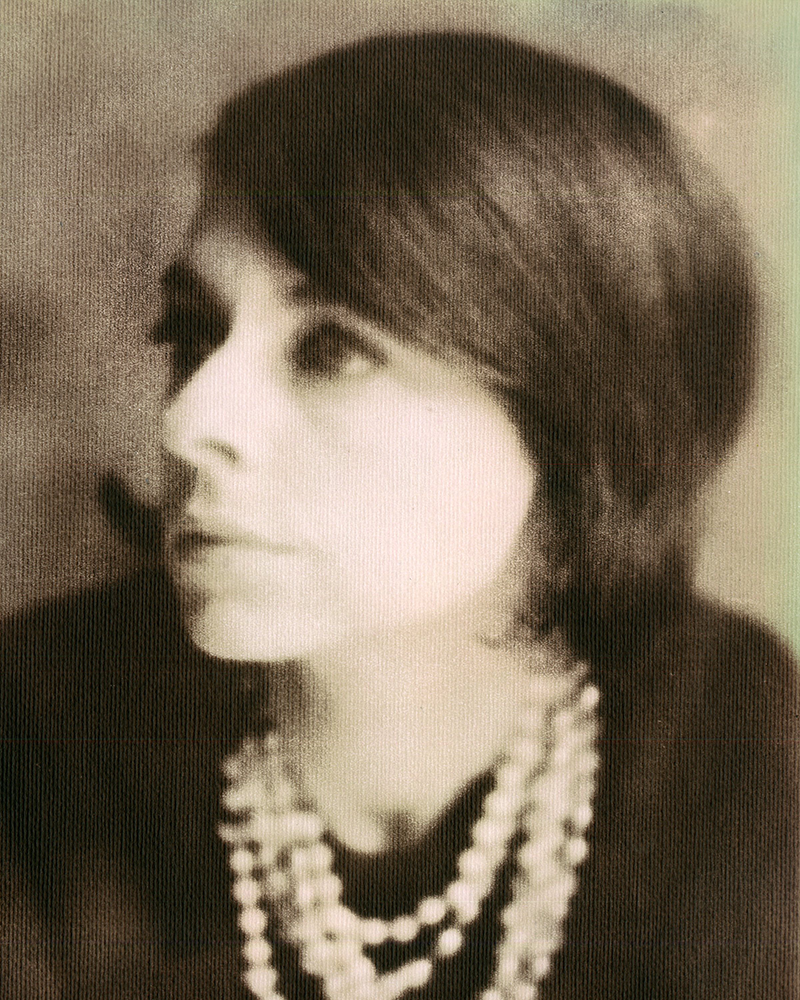
2012 self portrait at her home in Mallorca Spain.
Elaine Lustig Cohen, who died a week ago at the age of 89, earned pioneer status in 1955, after taking over the midtown Manhattan studio of her first husband, Alvin Lustig, following his death from diabetes that year at age 45.
To fill Lustig’s shoes would have been difficult for anyone; for Elaine it was nothing short of a Herculean task. Most of Lustig's clients, including the architect Philip Johnson, simply assumed she would complete the unfinished commissions and accept new ones. Little did they know, when Lustig was alive she was not allowed to design anything. “As a rule,” she later recalled, “no one in the Lustig Office designed except Alvin himself”. In fact, Elaine and a couple of assistants, (including Ivan Chermayeff) did the “dirty work” while Lustig, dressed in a crisp white shirt and tie, sat at his immaculate marble desk with only a tracing pad, upon which he made thumbnail sketches for others to render.

Elaine in 1964, photographed by Naomi Savage
At the time in the United States, very few women designers ran their own studios, but it is perhaps worth mentioning that Elaine's professional standing far outlasted her years of practice because beyond being a pioneer, she was also the benefactor in so many ways for graphic design history, and an advocate for so many other historians, practitioners—and especially women. It is this enduring integrity and generosity that ultimately defined her highly treasured life.
Following Alvin Lustig's death, Elaine specialized for some time in designing book covers and jackets, initially following her late husband's aesthetic, until finding her own style and vision. For over a decade she earned commissions from museums, architects, and book publishers—including Noonday Press, whose publisher, Arthur Cohen, would become her second husband. Her own studio closed in 1967, although Elaine continued to design catalog covers for Ex Libris (the antiquarian bookstore she and Cohen ran together) focusing on avant-garde modernist books and documents. She turned instead to making art—inspired in part, by Constructivism, Dada, and the Bauhaus—and continued to do so until the end of her life.
A passionate historian, avid collector, and design practitioner, Elaine Lustig's Cohen led a long and prolific life never seeking acclaim or laurels: she knew who she was, understood what she did, and believed in the importance of sharing her knowledge with others. It was a privilege to know, work with and befriend her. For myself as well as countless colleagues, students, and friends, her passing represents an incalculable loss to a profession that benefited immensely from her many rich and lasting contributions.
